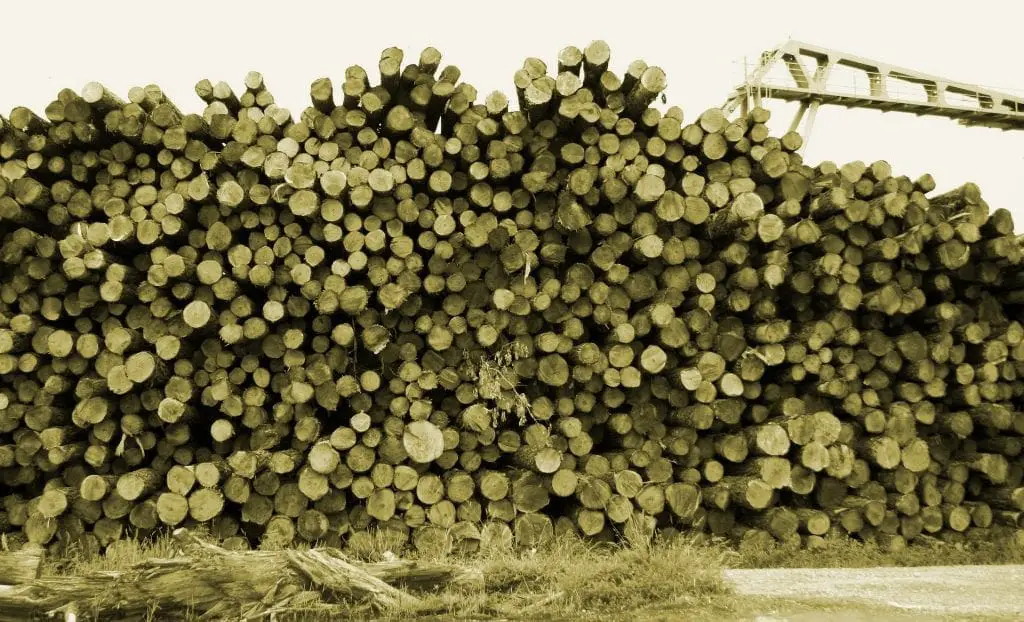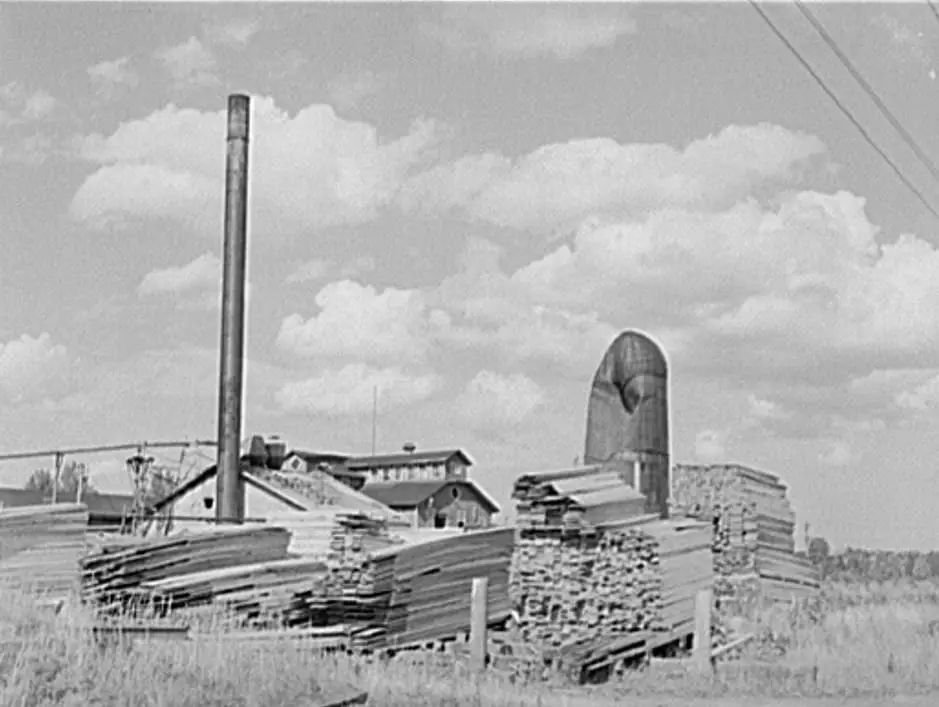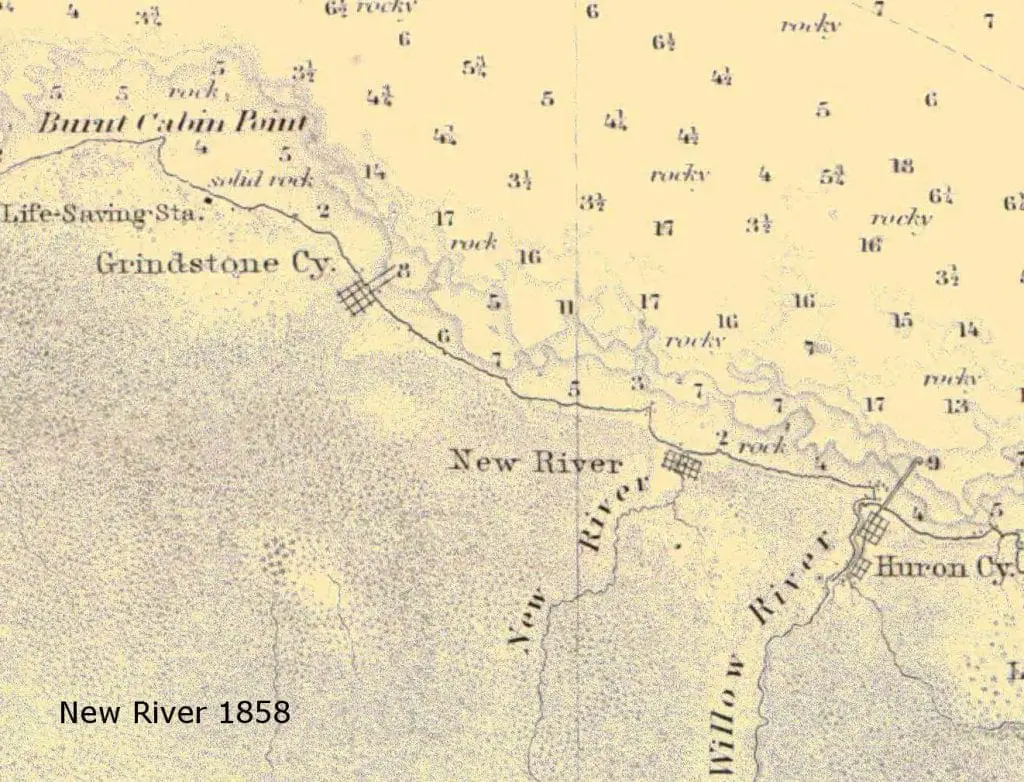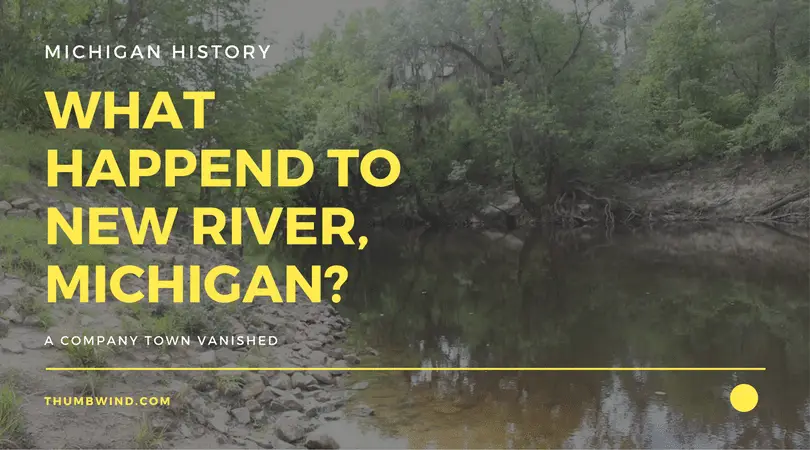A Vanished Town in Michigan’s Thumb
Near the tip of the eastern side of Michigan’s thumb lays a small cluster of neatly appointed cottages and mobile homes, some with a commanding view of the Lake Huron. This neighborhood is situated near a creek called New River. There is a street with a neat name, “Tip O Thumb Drive.” It describes the neighborhood perfectly. It’s almost idyllic. The question is, did someone develop this as a neighborhood during the cottage boom after World War II? Surprisingly this cottage retirement community is way older than that. It’s the site of a vanished Michigan town.

An 1870 plat map shows New River with a grid of plotted streets on both sides of the river and a large dock extending out into Lake Huron. By 1900 all references to this community were gone, erased, expunged from the public record. This little “neighborhood” was once the thriving company town. However, the former town has been erased by time and nature and a bit of redevelopment
The Incorporation of New River, Michigan
The town of New River was located about a mile from Huron City and eight miles from Port Austin. From initial land grants dated May 12, 1845, to J. Spikerman and Walter Hume. Originally starting as a fishing village, the hamlet developed quickly.
In the creek at New River, fish were so plentiful that it was a common practice for early settlers to catch them in the Spring in huge nets. Often a year’s worth of fish could be put away in barrels and cured. Sturgeon was common and frequently caught.
In the early 1900s, there are stories of local residents and farmers finding stone arrowheads and clay and stone pipes around New River creek. The local lore at the time alluded to the belief that it was once an Indian village or a hunting and gathering site for one of the many tribes that crisscrossed the region prior to European settlements.

New River Experienced Rapid Growth
A sawmill was built in 1853 using the water power of New River Creek. In addition to providing a power source, the creek carried the mill’s sawdust out into the lake. (Editor Note…this contrasts with operations at Port Crescent which used sawdust and lumbering waste as a source of fuel. ) A grist mill came in 1856. By 1858, industrialists Howe & Clark employed up to 100 men and built docks for shipment of lumber.
Other men who came there in the 1850s were J. R. Chambers in 1851, John Ginn in 1853, Francis Palms, in 1854, S. Sharpstein 1855, Thomas Donahue in 1856, and Alexander Miller in 1858. Here Cooper, Creevy & Go. used to operate an extensive salt block. However, their headquarters were in Port Austin.
It’s interesting to note that the first official deed recorded in Huron County Michigan was from Lorenz M. Mason to the County of Huron. It is for a sum of $175 and describes what is now known as the New River Cemetery, consisting of four acres. The deed describes as being the burying ground now in use Huron township, the last vestige of this vanished Michigan town

By 1870 more lumbermen arrived, Cooper, Creevy, and Noble came and operated mills, established two salt wells; one was 1040 feet deep and the other was 1003 feet deep. These wells produced on an average of 150 barrels of salt a day. The salt was shipped to Detroit, Toledo and St. Louis. Even today it’s said that that near the mouth of the New River Creek, there are still the foundation pilings driven in the ground where the salt blocks were located.

New River was a Company Town
The company owned almost the whole village. They owned the cooper shop and made their own barrels for transporting salt, the houses in which the workers lived, their own lumber mills, and blacksmith shop. The company built and maintained a boarding house. This town had a long dock where steamers regularly stopped for freight and passengers.
There is one sad chapter in the short history of New River. On October 23rd, 1871 there was a boiler explosion at the grist mill and salt block owned by W.H. Cooper. It was 1:30 in the afternoon when the mill was just starting its operations. Suddenly, the boiler head blew up severely scalding five men and an 11-year-old boy who was in the fire room at the time. Three of the men and the boy died of their burns.
Per Mr. James Kilpratrick, a state Geologist who visited in 1937, New River had the finest grade of salt found in Michigan. However, the salt block was discontinued in 1886 due to the economic downturn of the late 1800s. The low price of salt and the increasing costs of fuel doomed the operation. (Note The fuel was likely coal, and it was getting too expensive in the 1890s as a fuel source. Also, cheap slashing and sawdust were no longer available as lumbering operations waned. By 1865 all sawmill operations at New River had ceased. )
” class=”wp-image-5548″ width=”768″ height=”593″/>
One of the final acts of New River took place in 1895 at the Michigan Supreme Court. Noble vs. Thompson’s case involved the debts and mortgage and taxes of the salt block at New River.
Local lore from 1883 noted that this town had a long dock where steamers regularly stopped for freight and passengers. The small town had a store, a church, and a schoolhouse. When the salt industry declined, the town began to go down. Finally, every vestige of what had been a flourishing town disappeared.
Today all that remains of the vanished Michigan lumber town of New River is the cemetery and the salt block’s foundations, which are buried near today’s cottages overlooking Lake Huron.
Video: Michigan Ghost Towns
Sources for Vanished Michigan Towns
Pioneer history of Huron County, Michigan by Florence McKinnon Gwinn.
History of Grindstone City Area, Grindstone City, Huron County, Michigan
Related Stories of Vanished Michigan Towns
- A Ghost Town At Port Crescent State Park
- Where in the Heck is Kilmanagh
- Pinnebog General Store
- Captain Aaron Peer Founded Grindstone City
- Ghost Town in the Thumb – Port Crescent State Park
- Caseville Had A History of Industry Long Before Tourism
- Port Austin Beach at Bird Creek County Park




